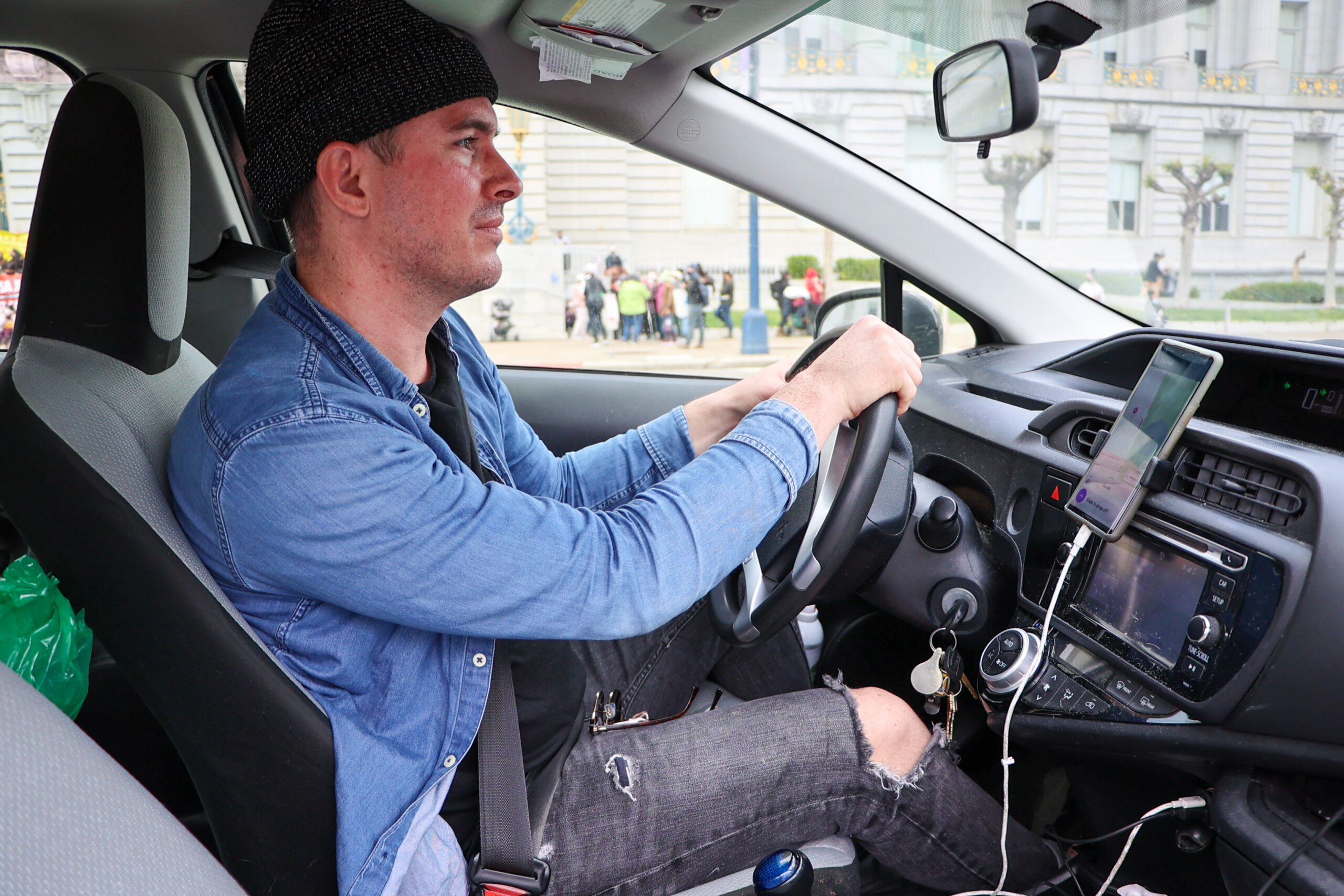One of the first rules any San Franciscan learns is to always carry a jacket—just in case. The city’s famously temperamental weather has taught many a chilly lesson to residents and visitors alike.
But as public agencies cede the decision about mask wearing to individuals, the very same rule might apply to carrying around a high-quality mask as a form of additional protection from Covid infection.
That’s exactly the mentality of John Brewer, a 14-year taxi driver. Even though he’d personally prefer not to wear one now that the local mandates have lifted, he’s keeping his mask close at hand out of respect for his passengers.
“I wear one if the other person does,” Brewer said.
As of midnight Thursday, San Francisco’s Municipal Transit Agency dropped its masking requirements for Muni riders, joining Bay Area Rapid Transit, taxis, Uber, Lyft and San Francisco International Airport in making masks optional for the public after the CDC’s masking mandate was struck down by U.S. District Judge Kathryn Kimball Mizelle. That was followed by guidance from the California Department of Public Health that officially terminated its own localized requirements for masking on transit.
A chorus is pushing back against the sudden lifting of mandates, with some public health experts voicing concern that it may be ill-timed in light of a recent uptick in cases.
Dr. Peter Chin-Hong, a UCSF infectious disease expert, said he was “astonished” by the court decision, which happened to come down while he was on a flight back to San Francisco to New York.
“It wasn’t like the CDC wasn’t going to do that eventually, but it’s a bad time,” Chin-Hong said. “Why wouldn’t you wait until the dust is settled, versus now where things are very dynamic and we’re seeing a big upsurge in the Northeast? It’s a little quieter on the West Coast but we still don’t know what’s going to happen.”
While masking is still “recommended” on buses, trains and in other venues—and many San Franciscans are opting to remain masked—it’s unknown what impact the rules change might have locally as the virus evolves.
Research suggests that the effectiveness of one-way masking relies on a number of factors, such as the type of mask. Dr. George Rutherford, a UCSF epidemiologist, uses a “30-60-90” rule as a rough shorthand for masking protection: If two people are sitting next to each other and neither are masked, the risk of transmission is around 70%; if one person is masked, that goes down to 40% and further to 10% if both individuals are masked.
“I’m pretty convinced by the data, simply put the more people that are masked, the more protection it offers,” Rutherford said.
Some transit riders say they can’t afford the enhanced risk. Senior and Disability Action, a Bay Area advocacy group, called on BART to pass a new mandate for at least the next six months. Raia Small, an organizer at SDA, said she hopes BART will take a lead on passing its own mandate, which could pressure regional transit agencies like SFMTA and AC Transit to follow suit with their own mandates.
“It would be confusing and bad to have different rules,” said Smalls. ”We’ve been relying on Covid mitigation measures on public transit for the last two years. It’s a big blow to accessibility.”
BART board members Rebecca Saltzman, Janice Li and Bevan Dufty plan to introduce a masking measure at next week’s BART board meeting. The details of the plan are set to be released on Friday as part of the agenda for next week’s meeting, and Saltzman said her team is still working out the details. She said it won’t call for a permanent mask mandate, but didn’t specify what the criteria for its expiration would be.
Saltzman said she’s worried about lifting the mandate right now, in particular, as cases tick up in San Francisco in the last few weeks and more people are getting back to riding transit: In April, BART ridership topped 140,000 daily riders, a level not seen since the beginning of the pandemic.
So far, SFMTA has given no indication of whether it will pursue its own mandate, though its board of directors noted at a meeting this week that the option is available. In its statement lifting the masking requirement, SFMTA underscored that “one-way masking works—especially when the mask is a surgical mask, N95, KN95, KF94, FFP2, double mask or a cloth mask with a filter inside.”
The transit agency also pointed to high vaccination rates in San Francisco, where 84% of the population is fully vaccinated. The BA.2 Omicron variant has driven a minor uptick in case counts in recent weeks, though hospitalizations and ICU usage remain relatively low. Chin-Hong said there are around a dozen Covid patients in UCSF’s ICU compared to 150 individuals in mid-January.
As public health experts continue to monitor the data, transit drivers and riders are left to rely on personal instinct—or good old-fashioned manners—in deciding whether to mask up.
Evan Atkinson has been driving for Lyft for 10 years in San Francisco, with more than 42,000 rides to his name. He said he’ll continue to mask up even without the mandate as long as most of his riders continue to mask, too. Since the changes were announced on Tuesday, Atkinson has had two riders thank him for continuing to wear a mask. Those who choose not to mask, he said, usually ask politely if it’s OK.
“Even though I would love to take it off, I am in customer service so I do think it’s important to make sure everyone is comfortable,” Atkinson said. “So I will continue to do it until I see a majority of people get in my car unmasked.”
